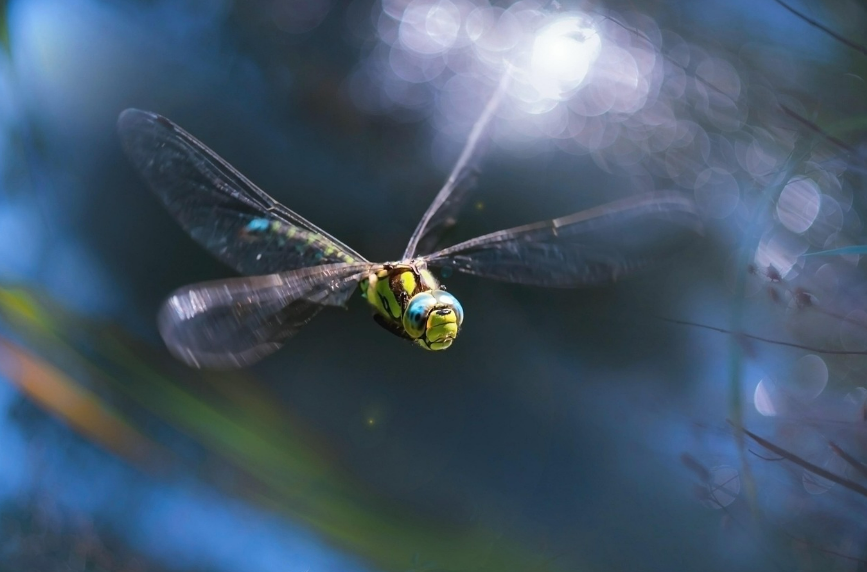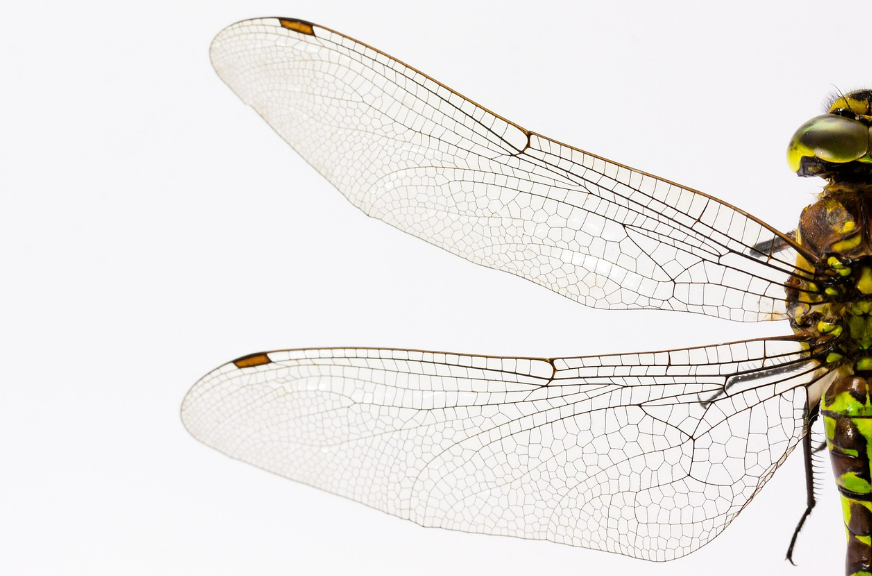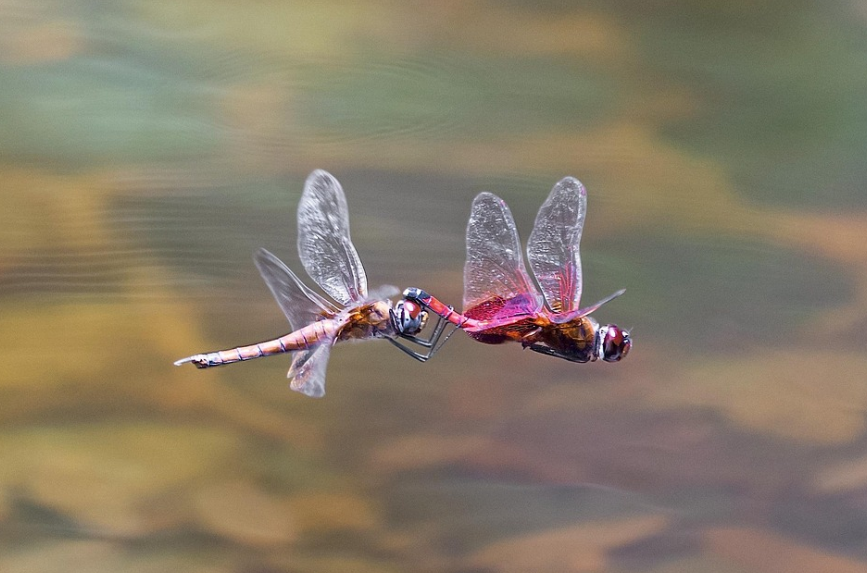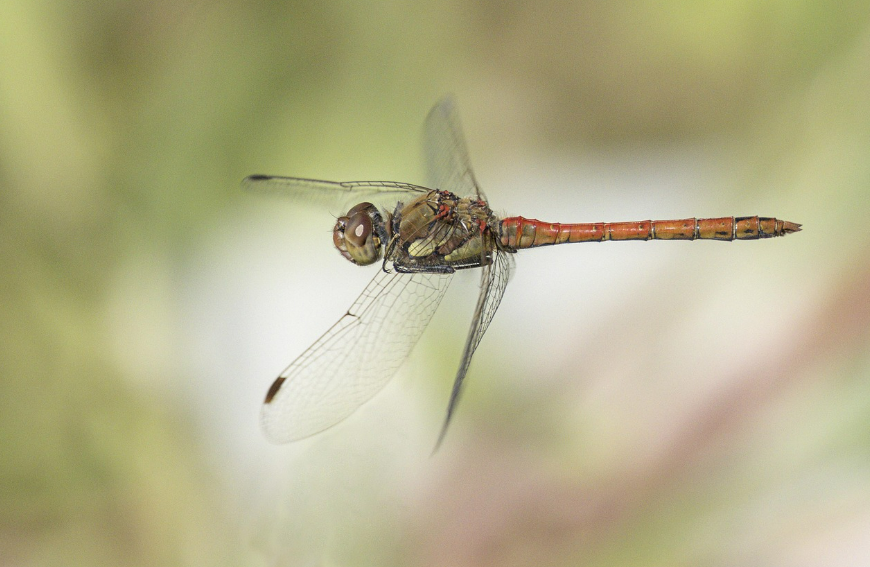By a quiet pond or over a green grass, you can often see dragonflies hovering gracefully in the air, as if frozen in time. This immediately reminds me of helicopters. Is the design of helicopters inspired by dragonflies? Today, let's uncover the mystery of how dragonflies hover in the air.
Dragonflies fly by relying on their wings, so let’s first learn about their wings.
一、Unique wing structure
The wings of a dragonfly are a masterpiece of evolution, thin as a gauze yet extremely tough. Its wings are covered with intricate webs of wing veins, which, like steel beams in a building, provide strong support for the thin wings, so that they will not deform when flapping at high speeds.This unique structure not only gives the wings strength, but also brings incredible flexibility.
Unlike other insects, each wing of a dragonfly is controlled by independent muscles. This means that it can precisely adjust the movement of each wing, whether it is changing the angle of the wing, the frequency of flapping, or the amplitude of vibration, it can do whatever it wants. This high degree of autonomy is the key to the dragonfly's ability to hover and perform various difficult flying maneuvers.
二、Efficient flight muscles
Dragonflies can hover thanks to their well-developed flight muscles. These muscles are the driving force of dragonflies' flight. They can contract and relax quickly, driving the wings to flap up and down at a very high frequency. Each flap can generate powerful force and provide lift for the dragonfly.What is even more amazing is that the dragonfly's flight muscles are highly coordinated. Different muscles can work together precisely according to the needs of flight. When hovering, the coordination of muscles is particularly critical. They must precisely control the movement of the wings to maintain stable lift and ensure that the dragonfly remains motionless in the air, just like a ballet dancer dancing in the air, with every movement carefully choreographed.三、Special flying skills
When a dragonfly hovers, it flaps its wings rapidly, creating a high-pressure area beneath its wings. This high-pressure area is like an invisible hand, holding the dragonfly firmly in the air, and the lift generated is perfectly balanced with its own gravity. In order to maintain this balance, the dragonfly must constantly fine-tune the size and direction of the lift.A dragonfly precisely controls its lift by subtly changing the tilt angle of its wings and the frequency of their flapping. Even the tiniest adjustments can keep it stable in the air.
In addition, dragonflies also have a natural "flight navigation system." Its antennae and other sensory organs can sense changes in the surrounding airflow in real time, just like the sensors on an airplane, providing the dragonfly with important flight information. Once it detects disturbances in the airflow, the dragonfly can respond quickly, adjust its flight posture, and always maintain a hovering state.
The mystery of how a dragonfly hovers in the air is a microcosm of the countless ingenious designs of nature. It allows us to see the magical power of biological evolution and the infinite wisdom hidden in nature. Next time you see a dragonfly hovering gracefully in the air, why not stop for a moment to appreciate this small miracle of flight and feel the wonder and beauty of nature.
animal tags: dragonfly
We created this article in conjunction with AI technology, then made sure it was fact-checked and edited by a Animals Top editor.



